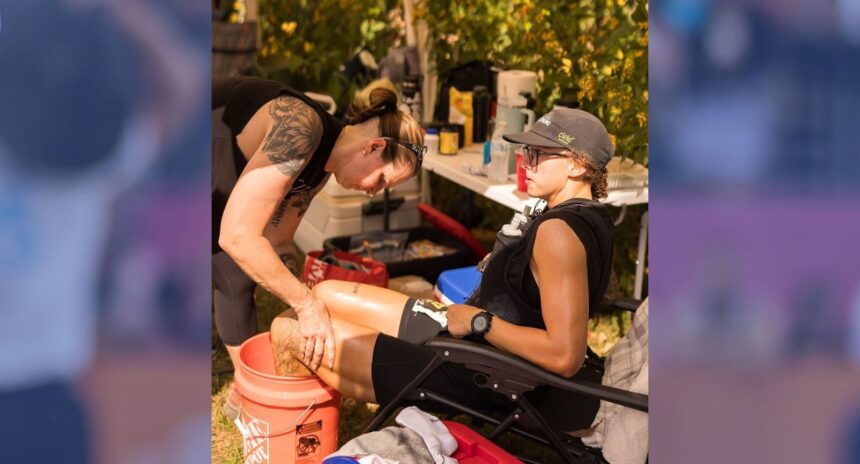What is Macro Tracking and is it Right for You?

If you’re just entering the CrossFit space, you’ve probably heard macros mentioned once or twice. To put it simply, macros are short for macronutrients. Although our bodies require a wide range of nutrients, the three that are most commonly associated with macro-tracking are proteins, carbohydrates, and fats. If you’ve been doing this for years, a friendly reminder of this topic doesn’t hurt and hopefully you learn a thing or two.
Macro Breakdown:
- Protein (4 cals/gram): promotes muscle building, allows feelings of satiation and fullness
- Carbohydrates (4 cals/gram): increases recovery rates, assists in thyroid, hormone, and digestion function, main fuel source for glycolytic energy system training
- Fats (9cals/gram): important for vitamin absorption and hormone function
- Technically alcohol is a macro BUT since ya’ll are taking the advice of not turning up ALL of the time from my last article, I’m gonna skip this one!
Think of macro-tracking like the road map you need to get to your “destination” (AKA goal). So if you have this particular fat-loss or muscle-gain goal, it’s really hard to get there if you don’t have a map, right? Although roadmaps are handy, there can be different tools to be used for different situations on different endeavors. That is why you could see your mom’s friend using her hand as a reference to portion out her food, or your nephew keeping track of everything he is eating in an app, all at the same family event. There is nothing wrong with any of these approaches and there is success to be made using each of them.
Personal preference: Macro-tracking can be a helpful tool in any health or wellness journey. Although it can be exciting to jump into trying something new with your nutrition, I don’t recommend macro-tracking until you’ve locked in the basics and built one hell of a solid foundation. You don’t go from a scaled to elite athlete overnight and the same is to be said with your nutrition experience.
Prerequisite recommendations to accomplish BEFORE macro-counting:
- Sleeping a minimum of 7 hours per night
- Consuming ~3 meals + ~1 snack per day
- Having each meal contain a serving of each: lean protein, fat, carbohydrate, vegetable, and fiber
- Consuming half your BW in ounces of water daily
- Achieving ~7-10k steps/day + 1-2 days of resistance training
- Cooking ~60% of your food from home
- Shooting for ~400-600g of fruits and vegetables per day
Once you’ve crushed this, where do you start?
- Log everything you eat/drink that contains macros for ~2 weeks. Learn what is in the foods you’re eating, how many fats, proteins, and carbohydrates are in certain foods. Become aware of what you’re actually eating and what you’re choosing to eat.
- Learn how to weigh/measure accurately. Inputting your data in a macro-tracking app accurately can make the world of difference between getting your results sooner than later. Yes, the couple bits you had while cooking your dinner matter, count it.
- Put in your practice reps. At first it’s going to feel like it takes you forever to find all the right entrees and adjust to the accurate measurements. However, like anything else, it’s going to take some practice and the more you do it the quicker it will become. I promise!
Avoid these common macro-tracking mistakes:
- Avoid generic entrees: Instead of “turkey sandwich” you will want to select “2 pieces of Dave’s Killer bread,” “3 oz of Kroger’s Deli Turkey”, etc
- Verify your selected entree: Double check the nutritional label of the selected item to ensure the numbers match. It’s easy to get caught selecting something because it looks right and then double checking to find out it’s not even close
- Inputting the food in accurately: If you select “Jasmine Rice” and the entree says “Raw” you will want to measure it raw. If you find it easier to measure “cooked,” simply search “Jasmine Rice, Cooked”
- Don’t eyeball your food: The good news is you’ve most likely been doing this your entire life. Take the time now to get used to weighing and measuring, train your eyeballs to recognize what 5-7oz of protein looks like, so that you can eventually move on from having to be so diligent with it
- Forgetting to log: This one seems pretty obvious, but it’s to be said about certain food types too. Just because something may be challenging to log or maybe super don’t feel super proud to do so – the more information you know, the better decisions you can make.
- Underestimating: This usually happens from eating food from somewhere outside your control. A great recommendation here is to add ~0.5-1.5tbsp of olive oil to be proactive about planning ahead for the unknown things a restaurant or family member may cook with. If you’re at a restaurant it would also be worth selecting the higher calorie intake number to be on the safe side.
What apps to use? Click here to view VeryWell Fit’s Top Picks.
Full disclaimer:
The macro tracking apps above are simply that. They are calculators. They are not humans or coaches. They don’t know what your activity and exercise looks like on a daily basis, they don’t know your health or medical history, and they don’t have a clue about your behaviors. I would recommend NOT using the app for their recommended calorie intake and JUST get used to the habit of logging and learning about food. Once you feel you are solid in your approach and consistent with your habits, consider hiring a coach if you need further guidance. Something else to consider – if you struggle with obsessive or disordered thinking and behaviors with food, macro-tracking may not be best for you right now and if you choose to use it, I recommend doing so with the guidance of a professional.


